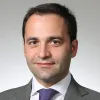Interview with L'Agefi (France)
Published in L’Agefi (France) on 28 October 2016
L’Agefi: What are your financing goals for 2017?
Kalin Anev Janse: Next year, the EFSF and the ESM will issue €50 billion in medium and long term maturities – compared to €39 billion this year – and an [additional] €13 billion in bills. For the EFSF, the rise is explained because of maturing debt that we need to refinance. For the ESM, it is not just the refinancing but also the financing of the third Greek programme of [up to] €86 billion which was decided in the summer of 2015. Over the next years, we will issue between €30 and 50 billion each year. Only after a decade, the total of our programmes will go down because the countries that we have financed will start paying back their loans.
What happens if the IMF decides to stay out of the third Greek programme?
We’re working on the assumption that the IMF will participate. Their share could be equivalent to what was decided for Cyprus, so around 10% of the programme. If the IMF refuses to contribute, we will be able to adjust our programme. We can easily lend more to Greece if needed. It’s not so much that we need the financial contribution from the IMF, but rather its expertise.
How can you help Greece in making its debt more sustainable?
The Eurogroup mandated us to explore several supporting measures for the short, middle and long term in May 2016. In the short term, we can reorganise the repayments that are scheduled for Greece. The average maturity of the loans, which is now at 28 years, could go up to 32 years. We can work on reducing on reducing the interest rate risk for Greece by borrowing more long-term. And finally, we have announced that we will waive a step-up which would lead to a rise in interest payments by Greece. These measures, which still need to be finalised, could be discussed by our board at the end of November. The idea is that they would come into force in the beginning of 2017. We will not discuss the middle and long-term measures before the end of next year.
How will your strategy evolve in 2017?
We are expecting to launch the first dollar bond issue for the ESM towards the end of 2017. We are aiming to widen our investor base. These dollar operations are particularly attractive for non-European central banks. It is also currently less expensive to fund in dollars. We reckon we’ll do one or two such transactions each year. The euro will remain our main issuance currency. We will also continue with the private placements in Germany (N-bonds) that we have started this year. These placements are popular among investors because we offer tailor-made maturities.
How did your funding programme go in 2016?
On Wednesday, we finalised the programme for the EFSF, and for the ESM we’ll be done by the end of November. Those programmes have been a success. We’ve been able to lengthen the average maturity of our bonds. It now stands between 7 and 8 years, whereas last year it was between 5 and 6 years. We think we can lengthen it even further, even though we do want to stay active on the entire yield curve. We can issue bonds up to 45 years but we won’t go beyond 43 years, with an eye to the loans we have provided to Greece.
How do investors react to the low interest rate environment, which has been strengthened by the QE programme of the ECB?
The ECB’s programme is significant. They are holding 32% of our eligible debt in their programme, which is €50 billion. And so, we can issue at negative yields up to 9 years maturity. We’ve noticed more interest for longer-dated bonds because investors want to avoid negative rates and are looking for yield. The good news is that there is still interest for our short and long-term issues.
For instance, this month, we issued 6-year paper at a yield of 22 basis point below mid swaps, but there was strong demand of €5.3 billion. Bank treasuries are continuing to buy at the short term because of regulatory reasons and we still compare positively compared to German paper. Such good financing conditions are beneficial to Greece.
How do you manage your own capital with such low rates?
It’s not easy. But since the start of September, we are authorized to invest in paper with negative yields and paper quoted in other currencies.
Author

Contacts


